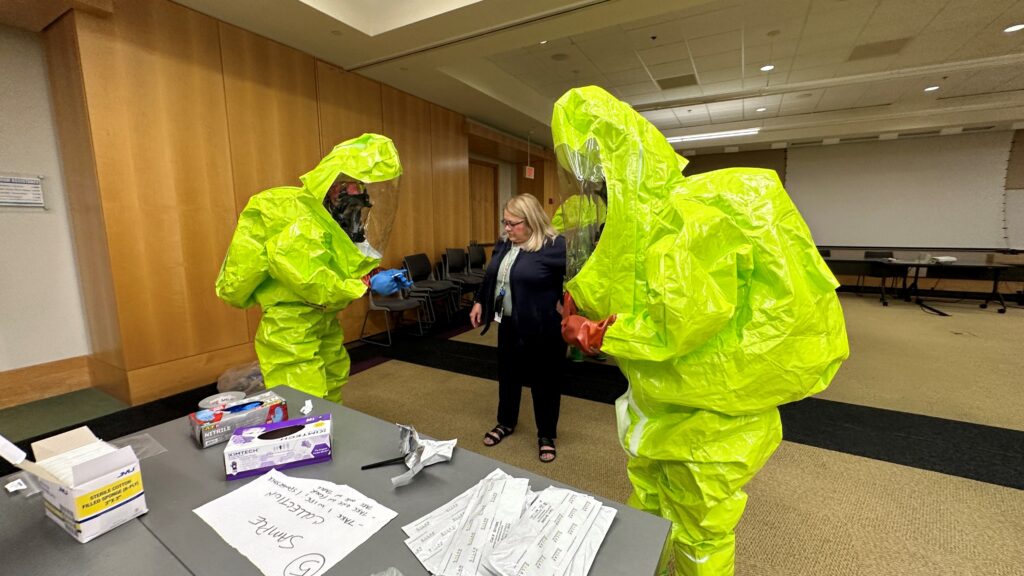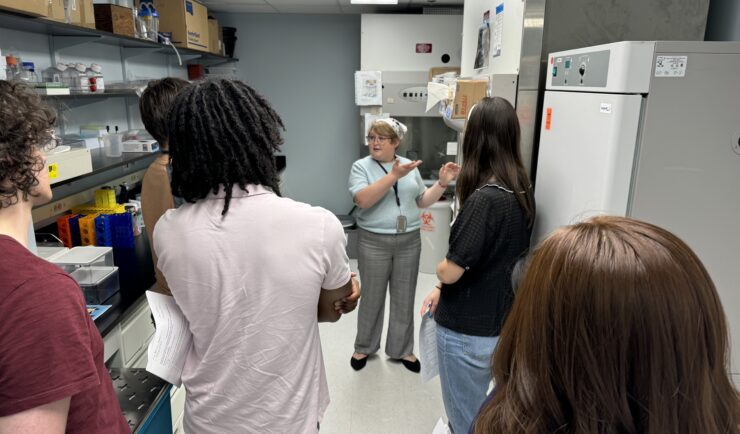

CSS scientists supporting the Environmental Protection Agency’s (EPA) Scientific and Technical Assistance for Consequence Management (STACM) contract are experienced in EPA’s emergency response efforts, both natural and manmade. To help EPA staff prepare for these emergency response efforts, CSS staff provide yearly response training. The training includes review of respiratory protection equipment, operation checks, a review of Level C, B, and A personal protective equipment (PPE). The various levels of PPE required for hazard response personnel provide increasing protection based on the hazardous material personnel are addressing. Level D provides minimum protect required using equipment such as gloves, coveralls, safety glasses, face shields, and chemical-resistant steel-toed shoes. Level A provides the highest level of protection for when the greatest hazard potential exists.
This equipment includes positive pressure, full face-piece self-contained breathing apparatus (SCBA); totally encapsulated chemical- and vapor-protective suit; inner and outer chemical-resistant gloves; and disposable protective suit, gloves, and boots. During the training, CSS staff have EPA personnel with the opportunity to try on and test the Level A PPE to try and complete some dexterity tasks, which adds some fun and entertainment to the training.

See More CSS Insights

Developing a Stream Assessment Protocol
CSS has been a significant contributor to the development and implementation of the Oregon Stream Function Assessment Method (SFAM) for more than 10 years. SFAM is a key component of the Oregon Stream Mitigation Program administered by the Oregon Department of State Lands. The mitigation program is designed to address damage to aquatic resources caused…

Contributing to Wind Energy Area Designations
The Bureau of Ocean Energy Management (BOEM) recently announced two Wind Energy Areas (WEAs) in the Gulf of Mexico. The WEAs are located off the coasts of Galveston, Texas, and Lake Charles, Louisiana and have the potential to power nearly three million homes. BOEM collaborated with the National Oceanic and Atmospheric Administration (NOAA) to identify…

Training the Next Generation of Researchers
CSS staff support the National Institutes of Health (NIH) Division of Occupational Safety and Health by providing Safe Techniques Advance Research Science (STARS) training to summer interns. Following a pause during the pandemic, staff resumed training May 15, 2024. During the in-person STARS training, CSS staff cover key concepts from the pre-requisite NIH Lab Safety…
